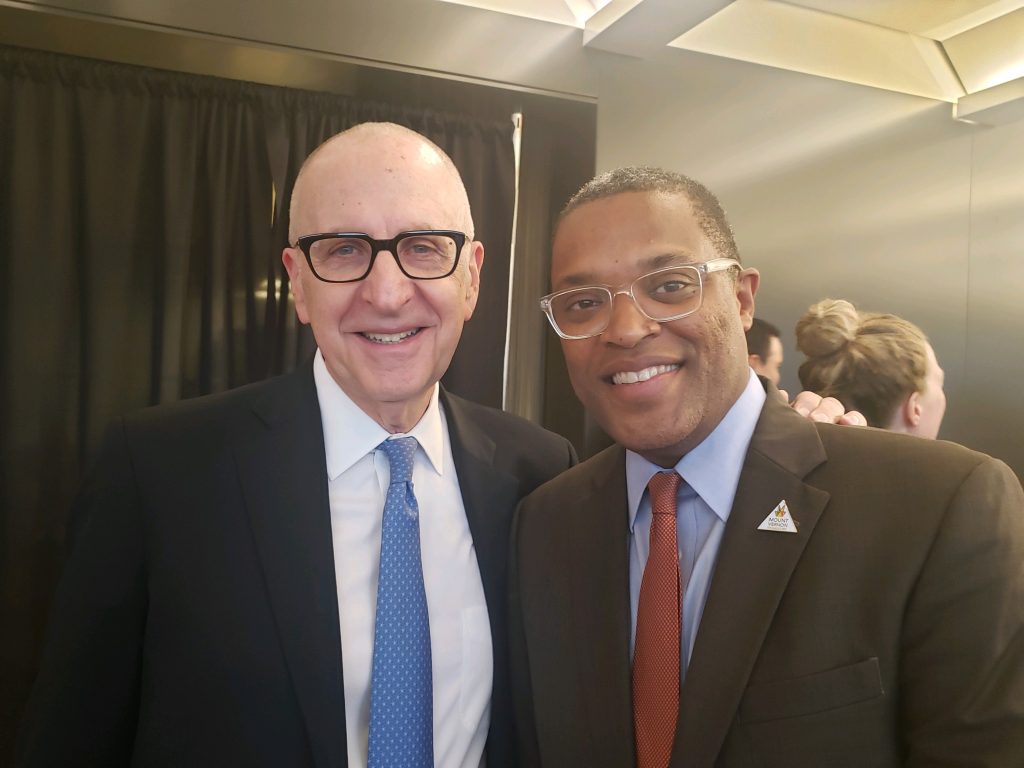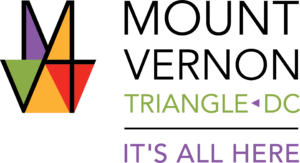AAMC Leader Talks Vaccines & Reopening Strategy with Federal City Council
Tuesday May 12, 2020
As District leaders work together to tackle COVID-19 and develop a city reopening plan as quickly, safely and responsibly as possible, the role of medical organizations like the Association of American Medical Colleges (AAMC) has become increasingly important to our understanding of the related public health implications and considerations. Located in Mount Vernon Triangle, the AAMC is a leading association dedicated to transforming health care through innovative medical education, cutting-edge patient care, groundbreaking medical research, and community outreach. Last week, former DC Mayor Tony Williams and the Federal City Council invited Dr. David J. Skorton – current AAMC President & CEO, immediate past Secretary of the Smithsonian Institution and former president of two prestigious universities, Cornell University and the University of Iowa – to participate in a “District Strong” discussion on a range of issues related to the COVID-19 public health emergency. With the gracious permission of both the AAMC and the Federal City Council, we have transcribed and adapted a significant portion of their rich, member-only dialogue and are pleased to share these informative insights with you below.
Who does the AAMC serve?
The AAMC is a not-for-profit association dedicated to transforming health care through innovative medical education, cutting-edge patient care, groundbreaking medical research, and community outreach. Its members include all 155 accredited U.S. medical schools and 17 in Canada; nearly 400 major teaching hospitals and health systems, including 51 Department of Veterans Affairs medical centers; and more than 80 academic societies. Through these institutions and organizations, the AAMC serves the leaders of America’s medical schools and teaching hospitals and their 173,000 full-time faculty members, 89,000 medical students, 129,000 resident physicians, and more than 60,000 graduate students and postdoctoral researchers in the biomedical sciences.
How has COVID-19 impacted the AAMC?
The AAMC has followed the Mayor’s guidance regarding closing our office on K Street in Mount Vernon Triangle. Our 700 employees have been working from home since the week that a public health emergency was declared and will continue to do so into June at a minimum. I told our employees recently that we may come back in early June, but there’s a chance that it may be July or later before we return. But while we have not been in our building, we have been hard at work remotely, providing scientific guidance to the White House Coronavirus Task Force and other federal officials, coordinating and conveying the needs of our members through the work of many colleagues including our chief health care officer Dr. Janis Orlowski, supporting the medical education community, and serving as a credible voice in the national media as people are trying to make sense of this unprecedented pandemic.
What’s so unique about COVID-19?
You’ll notice that experts refer to this particular virus as the novel coronavirus. SARS and MERS are also coronaviruses, but this is different in a couple of ways. One, it looks like it is more lethal than some other viruses that we deal with, such as influenza. And it’s also unusual – if not unique – in that you can be asymptomatic, so you can have it, spread it, and not become symptomatic. This characteristic of COVID – that you can spread it without showing any symptoms – makes it harder to get our arms around.
What information sources are assisting in shaping your professional views on COVID-19 and where are we now?
My views here are shaped by my own observations as a medical doctor and from listening to the AAMC’s member institutions, including four teaching hospitals here in the District: Howard University, MedStar Washington Hospital Center, MedStar Georgetown and George Washington University.
What’s complicated in answering where we are now, and one of both the beauties and challenges of the United States, is that we have we have very many different ways of doing things, different ways of looking at crises and dealing with everything from local public schools to law enforcement. Some areas of the country – and I think that Washington, DC is among them – have so far been able to manage without having the incredible pressure, for example, that our colleagues in New York City have had. Nonetheless, we’re still in the middle of this. I wish I could tell you that we are at the very tail end, but I don’t think that’s where we are.
But one of the problems in answering this question in a direct and authoritative way is that still today on May 4, we still don’t have the testing that we need to have. Different people have estimated as high as 5 million tests per day are needed across the country—and some have thought that number was too astronomical. But as we begin to re-open the country, we are going to need testing more than we ever had before to figure out the actual burden of the virus in the community and when and how it’s safe to get back together. Some advances have been made, and there are some very promising things just over the horizon in terms of different kinds of tests and also vaccines to prevent COVID-19 as well as treatments for the virus itself. I think we’re going to be in much better shape a bit later than where we are now. But right now, we’re still in the middle of it.
What types of tests are there to detect for COVID?
The first is the polymerase chain reaction (PCR) test, which is one kind of test that we are thinking about when they say we need 5 million tests. This test is based on getting some sample out of the back of your nose with a swab, or perhaps saliva, and then that sample is put into a transport medium and it’s carried from the patient to the machine. The machine extracts RNA from the mucus and cellular debris in the sample to determine whether any COVID-19 RNA is present in the viral material. That test is pretty definitive; however, it is expensive and a little bit slow.
The second type of test is the antibody test, which shows, if done very accurately, that you have had the virus and that you have developed some immunity against it. But because COVID-19 is still relatively low in prevalence within our overall population, the test’s accuracy must be high to avoid false results. So, we’re still working to see what the best kind of antibody test is.
Finally, there’s an antigen test that is similar to a strep test in that your throat is swabbed and you learn quickly whether the test is positive or negative. And that is something many of us are optimistic and hopeful that we will have, that these types of “point of care” tests will be available in the doctor’s office, urgent care, or clinic. Dr. Ross McKinney, AAMC’s chief scientific officer, is an infectious disease expert and very optimistic that we’ll have these types of antigen tests widely available in the not-too-distant future. They are being developed now, and once available, they will make it a lot easier to re-open and find out how far this virus as spread throughout our community.
What should the public be doing today to stop the spread of COVID-19?
Our main tools right now are social distancing, hygiene and wearing masks, which we now all know help to prevent you from spreading the virus to others. Mitigation efforts don’t sound as interesting as a vaccine or drug treatment. But right now, that’s one of the most important tools that we have while scientists are working on everything from testing drugs, to vaccines, to antigen testing, and all the other research that is going on. All that we have today is what your grandma would tell you: stay away from people if you are sick, take care of yourself and keep your hands clean. But there will be some more specific things coming out soon.
Where should policymakers be focusing their efforts?
The number one thing we should be doing is increasing the availability of testing by increasing the availability of all the “stuff” necessary to do the testing. And for that we need a greater level of coordination, as described in my April 13, 2020 open letter to Dr. Deborah Birx of The White House Coronavirus Task Force, which called for:
- the rapid deployment of a web portal that would allow all laboratories to easily report reagent or other supply shortages that are slowing or preventing testing from occurring;
- a clearer Federal role in the assessment and management of the supply chain for key testing reagents and supplies; and
- implementation of a transparent communication system to inform vendors and labs about the priorities, directions, and specific needs of the community.
Is there anything on the horizon that makes you optimistic about the future?
People who are vaccine experts make me feel optimistic that a year from now when we’re having this conversation, we’ll be having the conversation in the context of effective vaccines. Previously, supportive care was all we could offer as physicians and health care workers: get in bed, take care of yourself, come to the hospital if you’re very sick. If you can’t get oxygen in your body we’ll give you oxygen, and if you can’t breathe for yourself we’ll put you on a ventilator and breathe for you – and hopefully you come off the ventilator.
But just recently there have been some promising results of clinical trials, such as the remdesivir trials that have been in the news, which I believe will be the beginning of a wave of treatments that I believe will come in the not-so-distant future. Once we have that, and of course a vaccine, then we’ll have tools to fight back. But we don’t have them now as widely available as we would like. So that further puts the emphasis on testing – and I’m sorry to be tiresome and redundant about this, but mitigation such as social distancing is incredibly important.
What are some of your biggest concerns about re-opening?
I believe that 12 months from now we may have a vaccine and will have learned a lot from this experience and from our colleagues in other parts of the world. So, I think things will be better than they are today in terms of the COVID. But what’s very unsettling about this virus before then is that you can be asymptomatic and still be spreading and giving it to others. Even if state governments do begin to re-open their economies, many people may be unwilling to take the risk to go out in public for that reason.
I also think that it is possible that we will have this coronavirus coming back. Hopefully we’ll be much better off in dealing with it and will have a treatment along with better and more available testing techniques. But it’s also likely that we’ll have the influenza outbreak that we do every year. And the combination of those two things – the flu and coronavirus – could make this fall very challenging.
Have there emerged out of COVID-19 any other storylines that should be a major area of focus?
Something that bothers me more than anything we’ve talked about regarding life in the District and in our country are the enormous health inequities and our vulnerable populations. Long before the pandemic, we were failing as a society in how to deal with structural racism, how to deal with the criminal justice system, how to deal with the homeless. We’ve seen the effects of health inequities. We’ve seen the effects of this virus on vulnerable populations, and it’s a nightmare. We’ve seen it in this city in Wards 5, 7 and 8. And I’m worried that once we get a vaccine, we may become complacent on these really important issues.
I do believe there are concrete actions that we can take both over the short- and long-term to close the gap in health disparities among vulnerable populations. One example is the work being done by Dr. David Acosta, our chief diversity and inclusion officer, and Dr. Ross McKinney, our chief scientific officer as mentioned earlier, to enhance collection of not only race and ethnicity data, but also data on the social and environmental conditions in which people live, work and play – such as crowding, access to food and housing security, among others – that impact how illness can spread.
But aside from that, we must really look at the dilemmas in our society that – as tough and hard as they are – we all know need fixing. One of them is the incarcerated populations, and another is the homeless. This coronavirus is shining a bright light on problems that already exist and making them worse. But beyond the coronavirus, it’s the right thing to do for the people themselves and the right thing to do for the city.
We should also push hard on finding a solution for the uninsured in America to the benefit of both the public and our health care institutions. These institutions are economic drivers for their local economies, but also undergo significant financial strain when providing unreimbursed care.
What are some of the essential components in our ability to re-open?
I do think the general direction we are going in DC is the right direction, and our city leaders are doing a very good job of leading us in a logical and science-based way. We’re also blessed to have terrific public servants, a great private sector and leading organizations like the Federal City Council helping to lead the way. But we must be very careful to not do the wrong thing when re-opening.
My rule number one: go slow. Rule number two: maintain the mitigation very, very stringently. Rule number three: testing, testing, testing. Make sure that we have a handle on what the burden of the disease is in the population and – this is the hard part – be willing to change course if after re-opening the District, conditions begin to go backward and we see a big uptick in cases and deaths. We must have the personal and political courage to go back to a lockdown type of situation.
When planning for re-opening, it’s also very important that we think about the details of people’s encounters, and look at the mitigation strategies, and compare the two to each other. Because going to a park is much different than getting into an elevator.
Are there any closing thoughts you’d like to share?
Here are a few bottom line requirements from my end:
- We need to go slow as we begin to re-open our society.
- We need to work carefully together as a community.
- We need to be willing to be flexible and respond to data.
- We need to have the honesty and agility to go in a different direction if things start to go the wrong way.
- We need to think about our neighbors who are in worse circumstances than we are, and make sure that we do the things that we can do to help them get through what is going to be one of the hardest times of their lives. Let’s never forget that this is very, very hard for our neighbors who are frontline workers dealing with multiple strains all at once:
-
- The immense strain associated with providing patient care.
- The physical strain of putting on and taking off protective equipment.
- The emotional strain that they may get the virus themselves.
- The emotional strain of giving it to their family.
- And the strain associated with the sheer amount of death they are seeing daily.
This pandemic has laid bare so many fault lines in our health care system – so many areas where we can and must do better. But I think we can seize this opportunity, as a community and as a nation, to reshape the future of how we deliver health care in this country for the better.
Thank you.
Image below: MVT CID’s Kenyattah Robinson with Dr. David J. Skorton at a reception welcoming him to AAMC, September 23, 2019




